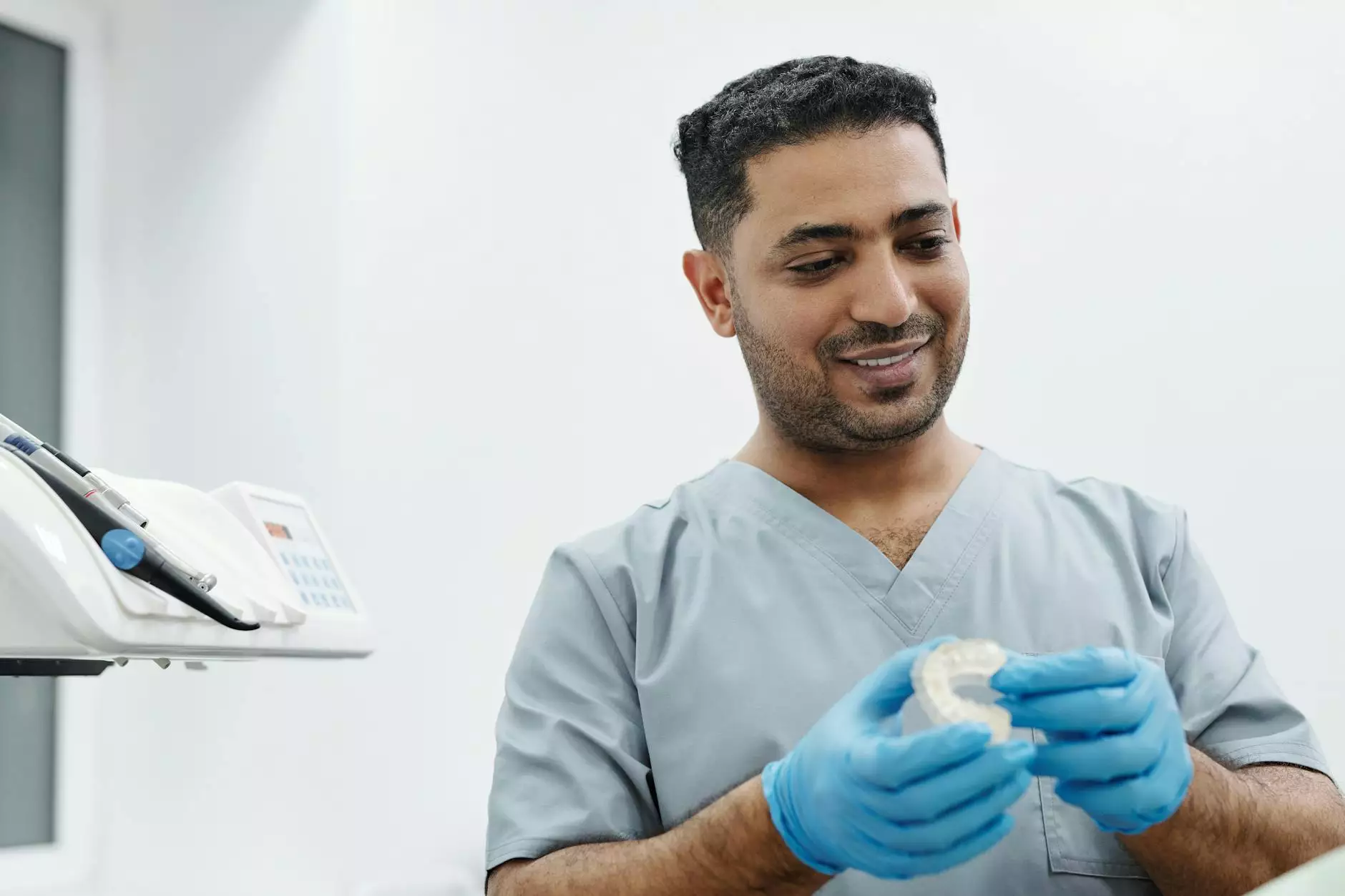Understanding Abduction and External Rotation: A Complete Guide to Shoulder Mobility and Rehabilitation

The human shoulder is one of the most complex and versatile joints in the body, allowing a wide range of motion essential for daily activities, sports, and work-related tasks. Among the critical movements that contribute to shoulder functionality are abduction and external rotation. These movements are not only fundamental in normal biomechanics but also pivotal in injury prevention, rehabilitation, and maintaining overall shoulder health.
Introduction to Shoulder Movements: The Significance of Abduction and External Rotation
Understanding the roles of abduction and external rotation in shoulder mobility provides insights into how the shoulder operates during various activities. These movements are essential for performing tasks such as reaching overhead, lifting objects, throwing, and even performing specific chiropractic adjustments or physical therapy exercises.
In this comprehensive guide, we delve into the anatomy, biomechanics, clinical relevance, and rehabilitation strategies related to abduction and external rotation. This knowledge is particularly beneficial for healthcare professionals, chiropractors, athletes, and individuals seeking to optimize their shoulder health and prevent injuries.
Anatomy of the Shoulder Involving Abduction and External Rotation
Key Structures Responsible for Abduction
- Deltoid Muscle: The primary muscle responsible for shoulder abduction, especially after the initial movement phase.
- Supraspinatus Muscle: Part of the rotator cuff, initiating abduction from 0 to 15 degrees.
- Glenohumeral Joint: The ball-and-socket joint enabling the wide range of abduction motions.
Key Structures Responsible for External Rotation
- Infraspinatus Muscle: Major external rotator, counteracting internal rotation forces.
- Teres Minor Muscle: Assists in external rotation and stabilization.
- Glenohumeral Ligaments and Capsule: Provide stability during external rotation movements.
Biomechanics of Abduction and External Rotation
The shoulder's remarkable mobility results from coordinated interactions among bones, muscles, ligaments, and tendons. During abduction, the humeral head moves upward and away from the body’s midline, primarily facilitated by the deltoid and supraspinatus muscles. The movement involves a gliding of the humeral head within the glenoid socket, requiring dynamic stabilization by the rotator cuff muscles.
Conversely, external rotation involves turning the arm outward, away from the body's centerline. This movement predominantly engages the infraspinatus and teres minor muscles, which counteract internal rotation and stabilize the humeral head within the socket. Proper external rotation is crucial for overhead activities, sports involving throwing, and certain chiropractic adjustments that require precise positioning of the shoulder.
Clinical Importance of Abduction and External Rotation
Injury Prevention and Shoulder Stability
Effective abduction and external rotation are vital for maintaining shoulder stability. Weakness or imbalance in these movements can lead to issues such as impingement syndrome, rotator cuff tears, labral injuries, and dislocations. Athletes engaging in overhead sports like baseball, tennis, or swimming are particularly susceptible to deficits in these motions.
Rehabilitation and Physical Therapy
Restoring abduction and external rotation ranges is often a key focus in rehabilitation protocols following shoulder injuries or surgeries. Targeted exercises help rebuild strength, improve mobility, and re-establish proper biomechanics, facilitating a safe return to activity. Chiropractors play a significant role in optimizing shoulder alignment and functionality through specific adjustments and soft tissue therapies.
Impact on Daily Activities and Occupational Tasks
Normal shoulder motion, especially abduction and external rotation, is essential for routine tasks such as dressing, grooming, lifting objects, and working at height. Limitations in these movements can significantly affect quality of life, so understanding and maintaining shoulder mobility is crucial.
Common Shoulder Conditions Related to Abduction and External Rotation Limitations
- Rotator Cuff Tears: Damage to muscles responsible for external rotation can impair movement and lead to pain.
- Frozen Shoulder (Adhesive Capsulitis): Characterized by limited abduction and external rotation due to capsular tightening.
- Shoulder Impingement: Repeated overhead activities can cause narrowing of subacromial space, affecting abduction and external rotation movements.
- Glenohumeral Instability: Excessive or repetitive abnormal movements can lead to dislocations or subluxations affecting these ranges.
Effective Strategies to Improve Abduction and External Rotation
Stretching Exercises for Flexibility
- Cross-Body Shoulder Stretch: Enhances horizontal abduction and external rotation.
- Sleeper Stretch: Improves internal and external rotation flexibility.
- Pendulum Exercises: Gentle swinging to increase joint mobility.
Strengthening Exercises to Stabilize and Power Up
- External Rotation with Resistance Bands: Builds specific muscle strength in the infraspinatus and teres minor.
- Scapular Stabilization Exercises: Improve overall shoulder mechanics and support abduction and rotation.
- Isometric Holds: For safe activation of rotator cuff muscles, especially in early rehab stages.
Manual Therapy and Chiropractic Care
Chiropractors focusing on the shoulder utilize techniques such as joint adjustments, soft tissue mobilizations, and targeted massage to enhance abduction and external rotation. These therapies are essential in reducing pain, restoring normal joint mechanics, and preventing future injuries.
The Role of IAO Muscle in Shoulder Mobility
The Infraspinatus and Axillary Oblique (IAO) muscles are critical in enabling external rotation and abduction. These muscles work synergistically with other rotator cuff muscles to stabilize the shoulder joint during dynamic movements. Proper function of these muscles ensures smooth and pain-free motion, which is vital for both athletic performance and daily activities.
Optimizing Shoulder Function Through Education and Proper Technique
Educating patients about correct movement patterns and posture can significantly reduce the risk of shoulder injuries related to abduction and external rotation. For athletes, coaches, and healthcare providers, emphasizing proper technique during training and activity can help prevent overstressing these motions.
Conclusion: Embracing a Holistic Approach to Shoulder Health
Whether you're recovering from an injury, seeking to improve athletic performance, or simply aiming to maintain optimal shoulder health, a thorough understanding of abduction and external rotation is vital. A combination of targeted exercise, manual therapy, lifestyle adjustments, and professional guidance can lead to enhanced mobility, reduced pain, and overall shoulder well-being.
Why Choose IAO and Our Medical & Chiropractic Services?
At iaom-us.com, we specialize in holistic health approaches, combining cutting-edge chiropractic care and specialized medical services to promote full-spectrum shoulder health. Our experienced professionals focus on personalized treatment plans that incorporate rehabilitation exercises, manual therapy, and patient education to ensure lasting results.
The Future of Shoulder Rehabilitation: Innovations and Emerging Therapies
Recent advancements in medical science have led to innovative techniques such as regenerative medicine, minimally invasive surgeries, and digital motion analysis. These tools help clinicians better diagnose and treat conditions affecting abduction and external rotation, accelerating recovery and improving function.
Final Thoughts
Understanding and maintaining abduction and external rotation are fundamental to overall shoulder health. Ensuring proper mobility and strength in these movements protects against injury, enhances performance, and contributes to a high quality of life. With the right combination of knowledge, exercise, and professional support, achieving optimal shoulder function is within reach.
For personalized assessments and tailored treatment plans, contact the expert team at iaom-us.com. Let us help you restore and enhance your shoulder mobility today!









